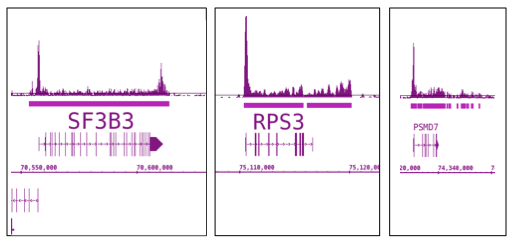RNA pol II antibody (mAb) (Clone 4H8)
Host / Isotype
Mouse / IgG1
Reactivity
Budding Yeast, C. elegans, Human, Mouse, Rat
Applications
ChIP, ChIP-Seq, ICC, IF, WB
CloneNo.
4H8
Cat No : 39097,39497 39097
Synonyms
Validation Data Gallery
Product Information
| Tested Applications |
ChIP, ChIP-Seq, ICC, IF, WB
Applications Validated by Active Motif: ChIP: 10 ul per ChIP ChIP-Seq: 20 ul each WB: 1:2,000 - 1:5,000 dilution For optimal results in Western blotting, primary antibody incubations should be performed overnight at 4°C. The addition of 0.1% Tween 20 to all blocking solutions may also reduce background. Individual optimization may be required. |
| Tested Reactivity | Budding Yeast, C. elegans, Human, Mouse, Rat |
| Host / Isotype | Mouse / IgG1 |
| Class | Monoclonal |
| Type | Antibody |
| Immunogen | This RNA pol II antibody was raised against a synthetic peptide YSPTSpPS corresponding to human RNA pol II. It recognizes both the phosphorylated and unphosphorylated forms of the largest subunit of RNA pol II. |
| Full Name | RNA pol II antibody (mAb) (Clone 4H8) |
| Synonyms | RNA pol II, mAb, monoclonal, RNA Polymerase II, antibody, antibodies, chip, chromatin immunoprecipitation, transcription, gtfabs |
| Molecular weight | 217 kDa |
| GenBank accession number | NP_000928 |
| RRID | AB_2732926 |
| Purification Method | Affinity Purified |
| Buffer | PBS containing 0.2% gelatin, 0.01% thimerosal and 0.1% sodium azide. Thimerosal and sodium azide are highly toxic. |
| Storage | Some products may be shipped at room temperature. This will not affect their stability or performance. Avoid repeated freeze/thaw cycles by aliquoting items into single-use fractions for storage at -20°C for up to 2 years. Keep all reagents on ice when not in storage. |
Background Information
RNA pol II (RNA polymerase II) is responsible for synthesizing messenger RNA in eukaryotes. RNA pol II contains a carboxy terminal domain composed of heptapeptide repeats that are essential for polymerase activity. These repeats contain serine and threonine residues that are phosphorylated in actively transcribing RNA polymerase. In addition, RNA pol II, in combination with several other polymerase subunits, form the DNA binding domain of the polymerase, a groove in which the DNA template is transcribed into RNA.


